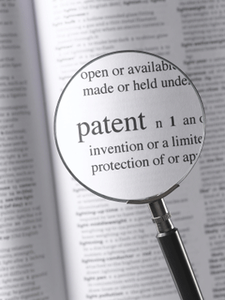The practice of evergreening, where pharmaceutical companies make small patentable changes to existing products with soon-to-expire patents, contributed to increased healthcare costs in Switzerland, according to a study by authors from the University of Geneva and Geneva University Hospitals [1].
Companies may evergreen their patents by combining formulations or producing slow-release forms of an existing drug. Such ‘follow-on’ products then compete with generics introduced after the patent expiry of the originator drug.
The study, carried out by Vernaz and co-authors used hospital and community pharmacy invoice office data in the Swiss canton of Geneva to calculate utilization of eight follow-on drugs in defined daily doses (DDD) between 2000 and 2008. The authors calculated the extra cost incurred according to three different scenarios that could occur after patent-expiry of an originator drug. Scenario 1 assumed that all brand-name drug prescriptions were replaced by generics, scenario 2 assumed the same for all follow-on drug prescriptions and scenario 3 assumed that all brand-name and follow-on drug prescriptions were replaced by generics.
Eight follow-on drugs were identified as being available in the canton of Geneva during the study period:
- 3 isomers: levocetirizine (follow-on drug for cetirizine), escitalopram (for citalopram), esomeprazole (for omeprazole)
- 1 active metabolite: desloratadine (for loratadine)
- 2 combination formulationsof the originator drug: alendronic acid combined with colecalciferol (for alendronic acid), simvastatin combined with ezetimibe (for simvastatin)
- 1 slow-release formulation: zolpidem extended release
- 1 structural analogue: pregabalin (for gabapentin).
The study found that the extra costs incurred were Euros 15.9 (95% CI 15.5; 16.2) million for scenario 1, Euros 14.4 (95% CI: 14.1; 14.7) million for scenario 2 and Euros 30.3 (95% CI 29.8; 30.8) million for scenario 3. The impact of strictly switching all patients using proton-pump inhibitors to esomeprazole at admission resulted in a spillover extra cost of Euros 330,300 (95% CI 276,100; 383,800), whereas strictly switching to generic cetirizine resulted in savings of Euros 7,700 (95% CI 4,100; 11,100).
The impact of listing these follow-on drugs in hospital restrictive drug formularies (RDFs) was also assessed and it was estimated that this practice resulted in extra costs of Euros 503,600 (95% CI 444,500; 563,100).
The authors concluded that the results demonstrate the effectiveness of evergreening strategies employed by pharmaceutical companies in the Swiss canton of Geneva. Despite competition from generics and co-payment incentives, the savings that could have been made from generics was offset by the successful marketing of follow-on drugs.
Conflict of interest
The authors of the research article declared that there were no conflicts of interest.
Editor’s comment
If you are interested in contributing a research article in a similar area to GaBI Journal, please send us your submission here.
Related article
Evergreening patents may make drugs too costly for patients in Thailand
Reference
1. Vernaz N, Haller G, Girardin F, Huttner B, Combescure C, Dayer P, et al. Patented drug extension strategies on healthcare spending: a cost-evaluation analysis. PLoS Med. 2013;10(6):e1001460. Epub 2013 Jun 4.
Permission granted to reproduce for personal and non-commercial use only. All other reproduction, copy or reprinting of all or part of any ‘Content’ found on this website is strictly prohibited without the prior consent of the publisher. Contact the publisher to obtain permission before redistributing.
Copyright – Unless otherwise stated all contents of this website are © 2013 Pro Pharma Communications International. All Rights Reserved.








 0
0











Post your comment